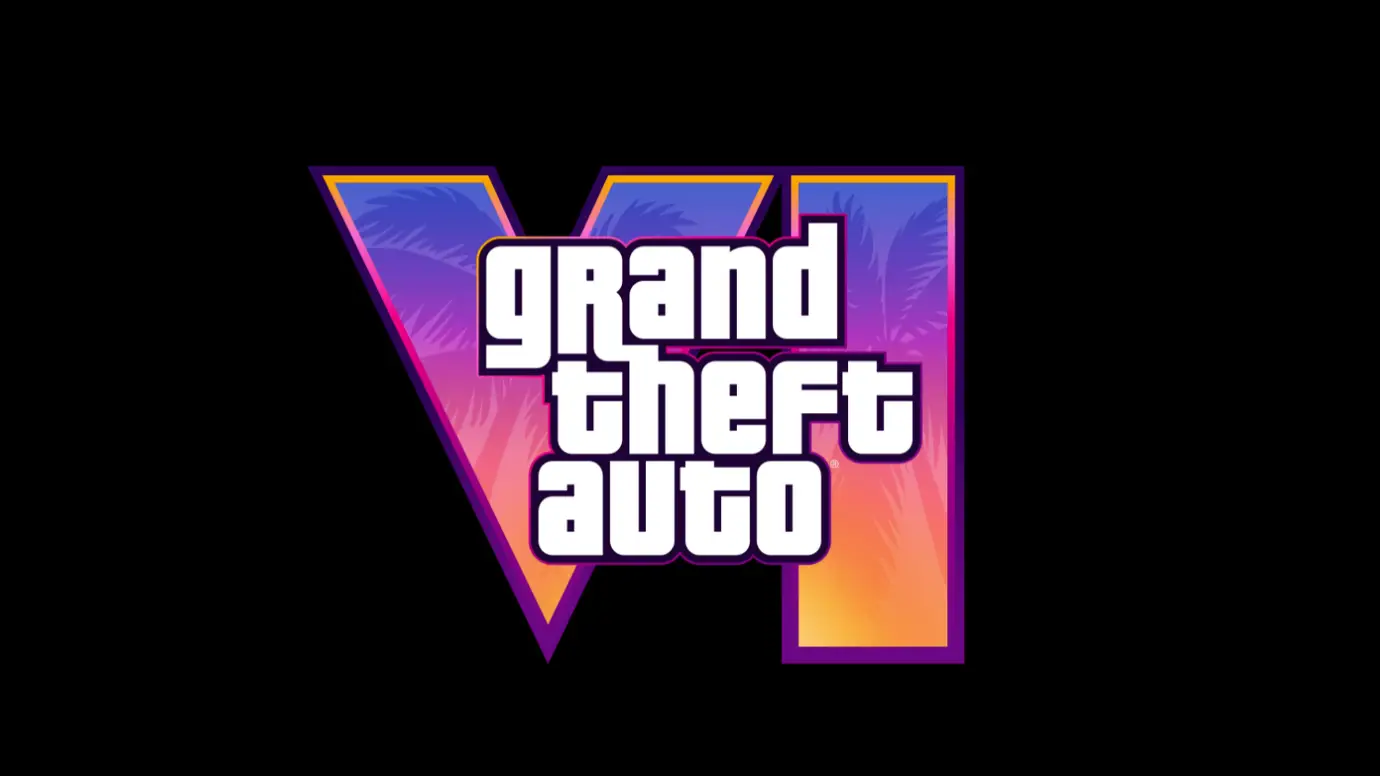Grand Theft Auto V’s Enduring Reign and the Long Road to Grand Theft Auto VI
Few titles in the history of interactive entertainment cast as long a shadow as Grand Theft Auto V. Launched initially in 2013, the game transcended its medium to become a cultural touchstone, a commercial juggernaut, and a persistent online world for millions. Its unprecedented success set sky-high expectations for its eventual successor, Grand Theft Auto VI. The recent announcement delaying GTA VI’s launch to May 2026, pushing it back from its anticipated Fall 2025 window, has sent ripples through the gaming community and the industry at large. This report analyzes the multifaceted success and enduring legacy of Grand Theft Auto V, examining its record-breaking sales, critical reception, cultural impact, and sustained relevance fueled by GTA Online and the phenomenon of Twitch role-playing servers. It further dissects the announcement and implications of the Grand Theft Auto VI delay, exploring the official rationale, market impact, and the complex spectrum of fan reactions.
Grand Theft Auto V: An Unprecedented Phenomenon
A. Sales and Financial Dominance: A Colossus of Entertainment
Grand Theft Auto V‘s commercial performance upon release was nothing short of historic. It obliterated industry sales records, becoming the fastest-selling entertainment product in history by earning a staggering $800 million in its first day and crossing the $1 billion threshold within just three days. This initial velocity set the stage for enduring financial success.
As of early 2025, GTA V has shipped over 210 million copies worldwide, solidifying its position as the second-best-selling video game of all time, surpassed only by Minecraft. This figure represents nearly half of the entire Grand Theft Auto franchise’s total sales, which exceed 440 million units. The game’s longevity is remarkable; even in late 2024, it continued to sell approximately 5 million copies per quarter, a pace many new releases would envy over their entire lifetime.
This sustained sales performance translates into monumental revenue. GTA V is recognized as one of the most financially successful entertainment products ever created, generating over $8.5 billion in worldwide revenue as of recent estimates. Analysis of Take-Two Interactive’s earnings indicates that the Grand Theft Auto franchise, heavily dominated by GTA V and its online component, has generated over $9.54 billion in cumulative revenue since GTA V‘s launch in September 2013 through the end of 2024. While these figures include other franchise entries, the overwhelming contribution comes from GTA V and GTA Online‘s mix of game sales and recurrent consumer spending (microtransactions like Shark Cards and subscriptions like GTA+). This consistent financial engine has been a cornerstone of publisher Take-Two Interactive’s success for over a decade.
B. Critical Acclaim and Design Innovation: Redefining Open-World Gameplay
Beyond its commercial triumph, Grand Theft Auto V received widespread critical acclaim upon release, cementing its place among the highest-rated games ever. Review aggregator Metacritic assigned the PlayStation 3 and Xbox 360 versions scores of 97 out of 100, signifying “universal acclaim”. Publications lauded it as a “generation-defining” achievement and “one of the very best video games ever made”.
Critics praised numerous aspects of its design. The innovative decision to feature three distinct, switchable lead protagonists – Michael, Franklin, and Trevor – was highlighted as a leap forward in narrative structure for the series, allowing for more complex storytelling and varied mission design. The interplay between these characters, their individual arcs, and their combined exploits formed the core of the game’s gripping, darkly comic narrative.
The open world of Los Santos and its surrounding San Andreas region was universally commended for its scale, detail, and sense of life. Reviewers noted significant technical advancements over Grand Theft Auto IV, including improved character animation, draw distances, lighting, and overall graphical fidelity, pushing the capabilities of the seventh-generation consoles. The world felt more expansive and populated, offering a staggering variety of activities beyond the main missions, from sports like tennis and golf to pursuits like flying planes and deep-sea diving.
Gameplay mechanics also saw refinement. Vehicle handling was considered more responsive and satisfying, while shooting mechanics were tightened, incorporating improvements learned from other Rockstar titles like Max Payne 3 and Red Dead Redemption. The introduction of mid-mission checkpoints addressed a long-standing frustration from previous entries. While some minor criticisms targeted aspects like auto-aim and cover mechanics , the overall consensus was that GTA V represented a significant evolution and polish of the core Grand Theft Auto formula.
C. Cultural Imprint: Satire, Controversy, and Memes
Grand Theft Auto V‘s influence extends far beyond sales charts and review scores; it has left an indelible mark on popular culture. The game’s biting satire of contemporary American life – targeting everything from celebrity culture and media to politics and the post-economic crisis landscape – was a frequent point of discussion. Its depiction of fictional Los Santos, heavily inspired by Los Angeles, resonated with players as both a recognizable and exaggerated reflection of modern society.
This cultural resonance manifested significantly in internet culture. Iconic elements from the game became widespread memes, such as the red “Wasted” screen signifying failure, humorous or bizarre non-player character (NPC) dialogue and behavior, and the chaotic antics associated with the character Trevor Philips. The game’s radio stations, featuring curated soundtracks and talk shows like Dr. Ray De Angelo Harris’s “Chakra Attack” (voiced by JB Smoove), also contributed to its cultural footprint, popularizing certain songs and becoming memorable in their own right.
However, GTA V‘s cultural impact has also been tied to controversy. Since the series’ inception, Grand Theft Auto has faced criticism for its depictions of violence, crime, and its representation of various groups, including women and minorities. GTA V reignited these debates, with its graphic content, particularly a controversial torture scene , and depictions of female characters often criticized as negative stereotypes (e.g., prostitutes, addicts). These controversies sparked ongoing discussions about the impact of violent video games and the ethical responsibilities of developers. Despite these debates, or perhaps partly because of them, GTA V remains a powerful cultural artifact, influencing mainstream media like television and film with its cinematic style and narrative themes, and even being referenced (sometimes contentiously) in relation to real-life events. Its ability to simultaneously entertain, satirize, and provoke underscores its complex and lasting cultural significance.
The Digital Afterlife: Sustained Engagement via GTA Online and Twitch
While the single-player campaign laid the foundation, the longevity of Grand Theft Auto V is inextricably linked to its online component, GTA Online, and its massive presence on streaming platforms, particularly Twitch.
A. GTA Online’s Enduring Appeal: A Living World
Launched shortly after the base game, Grand Theft Auto Online transformed GTA V from a finite single-player experience into an evolving live service. This persistent online world allowed players to create their own characters, engage in cooperative missions and heists, compete in various modes, purchase property and vehicles, and interact within the sprawling sandbox of Los Santos.
Rockstar Games supported GTA Online with a steady stream of free content updates over the years, adding new vehicles, weapons, missions, businesses, and major heist expansions. This regular infusion of new activities kept the experience fresh and incentivized players to return. The model proved immensely profitable through recurrent consumer spending, primarily via the sale of “Shark Cards” (in-game currency) and, later, the GTA+ subscription service. This revenue stream became a major financial driver for Take-Two Interactive.
Even over a decade after launch, GTA Online maintains a substantial and active player base. Estimates suggest it regularly engages over 20 million players monthly across console and PC platforms, peaking higher after major updates. Its availability across three console generations (PS3/Xbox 360, PS4/Xbox One, PS5/Xbox Series X|S) allowed it to capture a vast audience, becoming a “de facto game people buy” with new hardware.
However, GTA Online has not been without its challenges. The in-game economy has faced criticism for being grind-heavy, potentially pushing players towards microtransactions. Issues with cheating, griefing (players intentionally disrupting others’ experiences), and bugs have also persisted. Furthermore, Rockstar’s ban and suspension policies, while intended to combat cheating, have sometimes been perceived as opaque or difficult to appeal, leading to player frustration. Despite these issues, the core appeal of a constantly evolving, shared open world has ensured GTA Online‘s remarkable staying power.
B. Twitch Dominance and the RP Revolution: How Role-Playing Revitalized Engagement
Parallel to GTA Online‘s direct success, Grand Theft Auto V achieved and maintained an astonishing level of popularity on the streaming platform Twitch. For years, it has consistently ranked among the most-watched categories, often vying for the top spot.
Table: GTA V Twitch Viewership Snapshot (Select Periods)
| Data Period | Hours Watched | Average Viewers | Peak Viewers | Average Channels Streaming | Overall Rank (Watched) | Source(s) |
|---|---|---|---|---|---|---|
| Past 7 Days (approx.) | 18,367,215 | 109,328 | 227,412 | 2,569 | 3rd | |
| Past 365 Days (approx.) | 1,239,447,904 | 141,489 | 647,468 | 2,777 | 2nd | |
| Year-to-Date 2025 (approx.) | >358.3 Million | 123,993 | 389,755 | N/A | N/A | |
| March 2025 | 77.7 Million | 107,879 | 226,193 | 2,715 | N/A | |
| 2024 (as of Aug 2024) | N/A | 185.3K (Avg) | 613.6K (Peak) | N/A | #1 Game (Hours Watched) |
Note: Data reflects snapshots from sources accessed at different times; viewership fluctuates.
While GTA Online‘s inherent chaos provided entertaining content, a major catalyst for GTA V‘s sustained Twitch dominance was the rise of Grand Theft Auto Role-Playing (GTA RP). GTA RP utilizes community-created modifications, most notably the FiveM framework , to transform standard GTA Online sessions into dedicated role-playing servers. On these servers, players do not engage in typical missions or free-for-all mayhem; instead, they embody specific characters – police officers, criminals, paramedics, business owners, taxi drivers, or completely unique personas – and live out emergent, player-driven narratives within the Los Santos world.
The appeal of GTA RP lies in its immense freedom, creativity, and social interaction. Players craft detailed backstories and personalities for their characters , adhering to server rules that often mandate staying “in character” (IC) and avoiding unrealistic actions. This focus on immersion, realism (within the game’s context), and collaborative storytelling offers a vastly different experience from standard GTA Online. Popular servers like NoPixel , Eclipse RP , the text-based GTA World , and others fostered vibrant communities, each with its own factions, economy, and social structures.
Crucially, GTA RP became a content goldmine for Twitch streamers. High-profile streamers like xQc, Summit1G, Lord_Kebun, PaulinhoLOKObr, and many others flocked to servers like NoPixel, drawing massive audiences with their unpredictable interactions, dramatic storylines, and comedic moments. This exposure introduced GTA RP to millions, creating a symbiotic relationship where streamer popularity fueled RP server interest, and the compelling, unscripted nature of RP provided streamers with near-endless engaging content. Viewership spikes often correlated with major RP server updates, such as the NoPixel 3.0 launch in early 2021, which saw GTA V reach staggering peak viewership numbers on Twitch.
The immense success of GTA RP, driven largely by community creativity rather than official developer updates, offers a compelling illustration of how empowering players can sustain engagement. It demonstrates a strong audience appetite for emergent narratives and user-generated experiences within established game worlds. Players invested deeply in creating and inhabiting their roles , showing a desire not just to consume a game but to actively shape and participate in its social fabric. This phenomenon provides valuable lessons about fostering community creativity and the power of emergent gameplay systems for ensuring long-term relevance – lessons that undoubtedly inform the development of GTA VI‘s online component.
The Road to GTA VI: Anticipation, Hype, and the Inevitable Delay
Given the colossal success and cultural weight of GTA V, the anticipation surrounding its successor, Grand Theft Auto VI, reached fever pitch long before any official confirmation. The decade-plus wait only amplified the hype.
A. Setting Expectations: The Record-Breaking Reveal and Initial Timeline
When Rockstar Games finally unveiled the first official trailer for GTA VI in December 2023, the reaction was explosive. The trailer shattered YouTube viewership records within hours , offering tantalizing glimpses of a modern-day Vice City (set in the state of Leonida, inspired by Florida) and introducing players to the franchise’s first female protagonist, Lucia, alongside a male lead.
Crucially, the reveal trailer and subsequent communications from Rockstar’s parent company, Take-Two Interactive, established a release window of Fall 2025 for PlayStation 5 and Xbox Series X|S. This timeframe was consistently reiterated by Take-Two executives in earnings calls and public statements, with CEO Strauss Zelnick expressing confidence in hitting the Fall 2025 target as recently as February 2025. These earnings calls became closely watched events for any subtle shifts in language regarding the game’s progress.
B. The Delay Announcement: Official Statements and Rationale
Despite the repeated assurances, speculation about a potential delay persisted, fueled by Rockstar’s history of pushing back release dates for major titles. On May 2, 2025, these speculations were confirmed: Rockstar Games announced that Grand Theft Auto VI was being delayed.
The new, specific release date was set for May 26, 2026, exclusively for PlayStation 5 and Xbox Series X|S at launch. A PC version is widely expected but will likely arrive later, following Rockstar’s established pattern.
Rockstar’s official statement accompanying the delay conveyed an apology to fans: “We are very sorry that this is later than you expected”. The company acknowledged the immense hype surrounding the game and thanked fans for their patience, stating the need for additional time “to deliver at the level of quality you expect and deserve”.
Take-Two Interactive CEO Strauss Zelnick issued a concurrent statement expressing full support for Rockstar’s decision. He emphasized the commitment to “excellence” and the goal of creating a “groundbreaking, blockbuster entertainment experience that exceeds audience expectations”. Zelnick reiterated confidence in the company’s long-term financial prospects, stating that despite the delay, Take-Two expects to achieve record levels of net bookings in fiscal years 2026 and 2027. This aligns with previous comments where Zelnick noted Rockstar aims for “perfection”.
Industry reporting suggested that the Fall 2025 window may have been viewed as unrealistic internally for some time, with developers needing more time to polish the game and potentially a desire from management to avoid the intense periods of “crunch” (excessive overtime) that have plagued past Rockstar projects.
Table: GTA VI Delay Timeline & Key Statements
| Event/Date | Detail | Source(s) |
|---|---|---|
| December 2023 | First official trailer released, breaks YouTube records | |
| Dec 2023 – Feb 2025 | Initial release window announced and repeatedly confirmed as Fall 2025 for PS5/XSX\ | S |
| February 2025 | Take-Two CEO expresses confidence in Fall 2025 window | |
| May 2, 2025 | Rockstar Games announces delay | |
| May 26, 2026 | New official release date for PS5 and Xbox Series X\ | S |
| Rockstar Statement | “very sorry… need this extra time to deliver at the level of quality you expect and deserve.” | |
| Take-Two Statement | “support fully Rockstar… promises to be a groundbreaking, blockbuster… steadfast in our commitment to excellence.” |
C. Market and Industry Impact
The announcement immediately impacted financial markets. Take-Two Interactive’s stock price (TTWO) experienced a significant drop, falling approximately 10% in early trading following the news. Despite this short-term reaction, Take-Two management projected confidence, maintaining forecasts for sequential increases and record net bookings in fiscal years 2026 and 2027, indicating a belief that GTA VI‘s eventual launch will still deliver massive returns.
The delay significantly alters the competitive landscape for late 2025. The absence of GTA VI creates a large vacuum, potentially benefiting other major releases previously scheduled to avoid direct competition. Titles like Gearbox’s Borderlands 4, EA’s next Battlefield, Bungie’s Marathon, and Sony’s Ghost of Yotei may now find more breathing room. Nintendo’s upcoming Switch 2 console launch could also benefit from the reduced competition for consumer attention and spending. Conversely, any games targeting a release in or around May 2026 now face the daunting prospect of launching alongside what is expected to be the biggest entertainment release of all time.
This situation underscores the substantial influence that a single mega-franchise like Grand Theft Auto wields within the contemporary AAA gaming industry. The timing of its release impacts not only the publisher’s fortunes but also competitor strategies, market sentiment, and overall industry growth projections. The market’s reaction to the delay and the strategic recalculations forced upon competitors reveal the systemic risks and dependencies inherent in an industry heavily reliant on a few tentpole titles. When the schedule for such a pivotal game shifts, it exposes the fragility and potential market concentration risks tied to these blockbuster releases.
D. Community Pulse: Analyzing Fan Reactions
The fan response to the GTA VI delay was immediate and widespread, characterized by a mixture of emotions but largely dominated by disappointment and frustration.
A significant source of frustration stemmed from the timing and communication. Many fans felt misled after Take-Two and Rockstar had repeatedly confirmed the Fall 2025 window, only to announce a substantial delay relatively late in the perceived development cycle. Rockstar’s historically opaque marketing strategy, characterized by long periods of silence between announcements, was criticized as “painful for the fans,” with many lamenting the lack of new information, screenshots, or even a second trailer to soften the blow. The sheer length of development time – over a decade since GTA V‘s launch – also fueled disbelief and impatience for some. Reactions ranged from humorous expressions of dismay to outright anger, including anecdotal (and likely exaggerated) reports of extreme reactions like smashing TVs.
However, a notable segment of the community expressed understanding and patience. Recalling the troubled launches of other highly anticipated but rushed games (with Cyberpunk 2077 often cited as an example ), these fans emphasized the importance of quality assurance. The sentiment “Better to delay a game and polish it instead of releasing it too early but riddled with bugs” was common. Many pointed to Rockstar’s own track record, noting that previous delays for titles like Red Dead Redemption 2 and Grand Theft Auto IV ultimately resulted in highly polished, critically acclaimed experiences. These fans largely trust Rockstar’s commitment to quality and are willing to wait for the best possible version of the game.
Yet, even among those accepting the delay, a current of skepticism emerged. Drawing parallels with Red Dead Redemption 2‘s multiple delays , some fans began speculating that the May 2026 date might not be final, predicting a further push to Fall 2026 or even later. Concerns were particularly high among PC players, who anticipate an even longer wait, potentially stretching into 2027 or 2028, based on Rockstar’s history of staggered platform releases.
This complex fan reaction reveals a fundamental tension in modern AAA game development. Intense hype, fueled by marketing and long development cycles, creates immense desire for timely releases. Simultaneously, player experiences with buggy launches foster an appreciation for delays undertaken in the name of quality. Rockstar’s specific history of both high-quality final products and late-stage delays, combined with its minimal communication approach , complicates this dynamic. For some fans, the frustration stems not just from the wait itself, but from a perceived lack of transparency that erodes trust, leading to skepticism even about the newly announced timeline. It reflects broader shifts in player expectations regarding the developer-player relationship and the realities of managing expectations over protracted development periods.
Conclusion: GTA’s Legacy and the Weight of Expectation
Grand Theft Auto V stands as a monumental achievement in gaming – a critical darling, a cultural phenomenon, and a commercial behemoth that redefined long-term engagement through GTA Online and the unexpected surge of role-playing communities on Twitch. Its record-breaking sales, sustained revenue generation, and decade-long relevance have set an almost impossibly high bar for its successor.
This legacy directly informs the immense pressure and anticipation surrounding Grand Theft Auto VI. The decision to delay the game until May 2026, while met with understandable fan disappointment and immediate market repercussions, can be viewed as a direct consequence of this weight. Rockstar and Take-Two have explicitly framed the delay as necessary to achieve the “excellence” and “quality” demanded by both the franchise’s history and the audience’s expectations. It represents a strategic gamble, balancing the negative short-term impacts against the long-term imperative to deliver a polished, potentially “groundbreaking” experience that justifies the decade-long wait and avoids the pitfalls of a rushed launch. The move also potentially signals a greater consideration for sustainable development practices, aiming to avoid excessive crunch.
Looking ahead to May 2026 – or potentially later, given the community’s learned skepticism – the wait continues. The transition from the enduring ecosystem of GTA V and GTA Online to the new era of GTA VI presents a significant challenge for Rockstar, requiring careful management of multiple communities and platforms. Yet, the potential reward remains enormous. If Grand Theft Auto VI successfully navigates this transition and meets the colossal expectations placed upon it, it has the power to once again redefine blockbuster entertainment, generate unprecedented revenue, and carry forward the remarkable, complex legacy of its predecessor for another generation.












Add comment